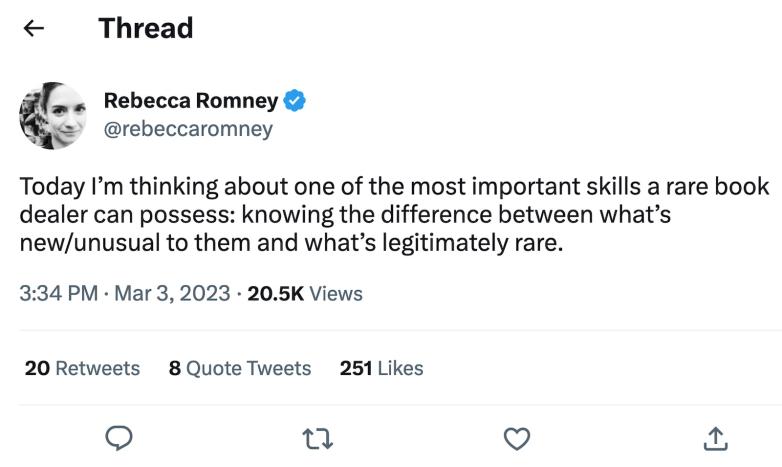What Actually is a "Rare" Book?

Rebecca Romney
Rebecca Romney, rare book dealer and collector at Type Punch Matrix, has shared her thoughts on Twitter about what she describes as "one of the most important skills a rare book dealer can possess: knowing the difference between what’s new/unusual to them and what’s legitimately rare."
Although it's had lots of views on Twitter, we felt that those of you not on the social media site would be interested in her thoughts and so here, with her permission, is Rebecca's thread on the subject:















